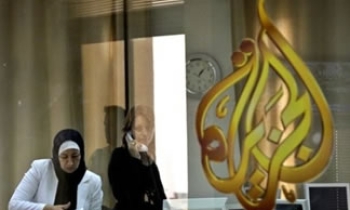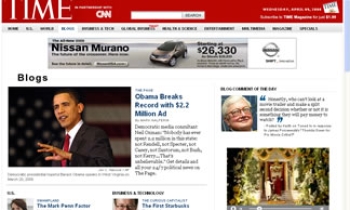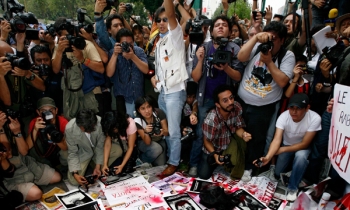MUMBAI - India's newspaper readership happily grew over the past year, according to the country's annual National Readership Survey (NRS) 2006. But it also found that magazine readership is down, television viewing is up and, controversially, Internet growth has slowed.
The largest media exercise of its kind in the world, the study sample involved an unprecedented 284,373 house-to-house interviews in 7,000 cities and towns and covered 535 publications - 230 daily newspapers, 305 magazines - all to provide data critical to India's US$2.8 billion advertising industry.
The survey revealed that daily newspapers continued to grow while desperately battling turf threats from the electronic media. They had 203.6 million readers, a 12.6 million addition since 2005. Eighteen dailies crossed the 5 million mark, but just one of them is in English, The Times of India (7.4 million). Suffering acute poaching of marketing and editorial talent by newcomers such as Daily News and Analysis, The Times of India's readership ranking dipped from No 9 in 2005 to No 11.
The biggest surprise was the relatively small rise in Internet usage, with NRS reporting users growing from 7.2 million to 9.4 million, with Internet homes showing a questionably small growth from 1.3 million to 1.5 million.
"The NRS survey seems to have underestimated Internet-users growth in India," Vijay Mukhi, president of the pioneering Internet Users Club of India, told Asia Times Online. "The more accurate number would be double of last year", to be about 14 million.
Mukhi, among the first to get an Internet connection in India in the mid-1990s, listed reasons Internet users are far more numerous than claimed in the survey: "The increase in laptop owners, with many laptop users having a wireless 'Net connection; increase in telephony usage with providers such as Skype, video conferencing, downloading of music, videos, ring tones and so on. There is a quantum jump in Internet usage. The problem with such surveys is they tend to see Internet usage as being elitist."
Realistically, India's online market ought to reflect trends across the border in China, where online advertising surpassed the print media last year. Shanghai-based iResearch estimates that China's online advertising market could reach 4.6 billion yuan ($578.6 million) in 2006, up 48% from 2005, and exceed $1.9 billion by 2010.
Most Indian advertisers, including medium-sized agencies, hesitate to recognize Internet value. "I see the Internet as still in a nascent stage in India," said Abhijit Bannerjee, managing partner of the Mumbai-based Wavelength Communications (current annual billings at $2.58 million). "If I spend Rs10 crore [$2.1 million], my Internet spend would be just Rs5 lakhs [$10,787]." ("Crore" is an Indian term meaning 10 million, while "lakh" means 100,000.)
Bannerjee says the advertising community has to go by the NRS figures, with some media planners cross-checking numbers with the alternative Indian Readership Survey (IRS). The problem is that industry insiders accuse almost every top publication of manipulating circulation figures. "We know they do it," said Bannerjee, "but without proof, who can nail them?"
A common ruse is to have two or three fake distributors picking up 50,000-60,000 copies from the printers ("who knows where these copies get dumped?" wondered Bannerjee), with the fraudulent figures duly picked up in circulation audits. Another trick is to include institutionalized circulation, the anonymous non-paying readership, through making free copies of newspapers available in educational institutions and in public places such as airports.
However, the print media, the survey found, are being overrun by satellite television. TV viewership was placed at 230 million, a 23-million jump from 2005. With more than 200 TV channels and quality talent in short supply, India's TV professionals are also making hay, with top soap-opera stars reportedly being paid $1,000 for a day's work.
Salary costs turned out to be the downside of media growth, according to the Associated Chambers of Commerce of India (Assocham), an apex industry body with 100,000 companies and professionals as members.
"Among the media firms the overall rise in the net profit for the quarter under review is merely 4%, whereas the figures for the rise in staff costs was over 29%," said the Assocham report. "Balaji Telefilms [India's major TV soap factory] faced a severe rise in its staff costs of over 251%. Firms like Cinevistaas, UTV, Zee Telefilms, Mid Day Multimedia and TV Today saw huge drops in their net profit, partly because of enhanced expenses on employees."
This is offset by the trend of Indian advertising filmmakers grabbing outsourcing work for overseas clients. Tribal DDB, the digital marketing wing of India's communications major Mudra, recently won a million-dollar account to manage British Telecom's (BT) global business-to-business online communications. Percept Profile won communication strategy duties for Nissan LCV, and top agency Ogilvy & Mather turned out award-winning work for Perfetti, an Italian confectioner. The global advertising outsourcing market is estimated at $280 billion.
"Tribal winning the BT account shows the coming of age of the Indian ad industry's strategic and creative thinking," said Madhukar Kamath, chairman of Mudra.
Kamath, also vice president of the Advertising Agencies Association of India, whose members account for almost 80% of the Indian advertising business, felt that "perhaps the first wave of the outsourcing contracts is for the jobs that are location-neutral".
The warning comes from an Assocham report saying China, the Philippines, Malaysia, Singapore, South Africa and Australia are seriously challenging Indian agencies. Mahendra Sanghi, president of Assocham, releasing the report "Outsourcing in Advertising: Is India the Destination Next?" this year, said these countries offer a better infrastructure and a single-window clearance.









